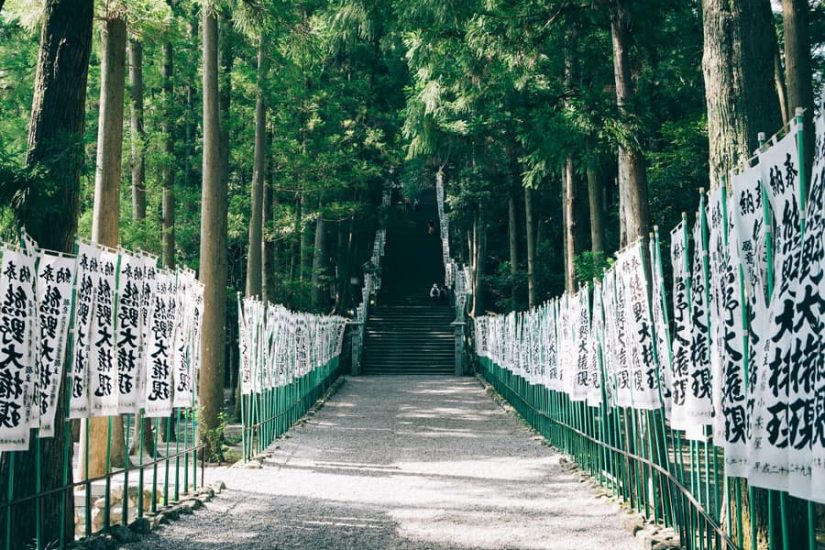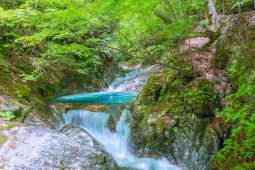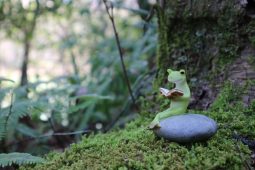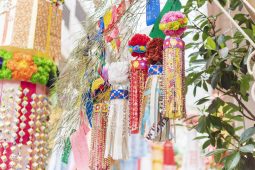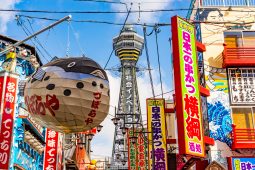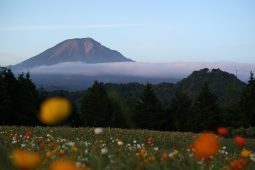Mountains cover around 70% of Japan and as hiking is a popular pastime in this country, its hiking trails are well-maintained, clearly sign-posted, and very easy to access. Even if you are based in one of Japan’s major metropolitan centers you are never more than a short train ride from a scenic mountain trek. Weather-wise the best time to hike is between August and early November. And if you prefer not to hike alone, a quick online search should bring up a friendly local hiking group in your area. Below are some great hiking locations in Japan that are suitable for either beginner or experienced hikers.
Mount Takao is less than an hour’s journey from central Tokyo and popular for its cherry blossom in the spring and autumn foliage in November. The mountain is 599 meters high and has eight hiking trails. Trail #1 is the easiest and takes around 90 minutes to reach the top, but you can make it even easier on yourself by taking a cable car or chairlift halfway up. At the top you will be rewarded by spectacular views over Tokyo and even Mount Fuji if the weather is clear. Other attractions include mountain temples, hot spring baths, and a monkey park. Mount Takao can be accessed from Tokyo via the Keio Railway network.
Mount Yoshino in Nara Prefecture is a famous cherry blossom viewing destination and its beauty has been celebrated in Japanese poetry for over a 1,000 years. The mountain is just 350 meters high and the way to the top is not so difficult, although there is a ropeway if you want to take it easy. Although the prime time to visit is when the mountain’s 30,000 cherry trees come into bloom, the autumn colours here also attract plenty of visitors. Mount Yoshino can be accessed from Osaka, Kyoto, and Nara via the Kintetsu Railway network.
Minō Park is a beautiful forested park in Osaka Prefecture. The main trail here leads from Hankyu Mino-o Station to the glorious Minō Waterfall which is 33 meters high. This initial hike will take around 45 minutes, but you can hike further into surrounding woodland if you are feeling adventurous. Along the way you can admire traditional buildings and temples, and maybe even see a monkey or two. Minō Park can be accessed in 30 minutes from Osaka’s Umeda district via the Hankyu Railway network.
The Kumano Kodō is a series of ancient pilgrimage trails in Wakayama Prefecture that connect three major shrines and other sacred sites. Along the way you can enjoy quaint country villages, hot spring spas, and gorgeous scenery. There are a number of multi-day hikes you can do in this area but the easiest route is the Nakahechi Trail which runs between the city of Tanabe and the shrine of Kumano Hongū Taisha and this can be covered in two or three days with stops at roadside inns. For more information on this and other routes check Tanabe City’s >official Kumano Tourism Bureau website
The Nakasendō is the old highway that connected Kyoto and Edo (modern Tokyo) during the Edo period (1603–1867). Although there has been much modern development along this route, there are some sections that are very well-preserved and the best known of these is located in Nagano Prefecture’s Kiso Valley between the old post towns of Magome and Tsumago with their traditional buildings and cobbled streets. Walking between these two locations should take around 3 hours. This trail can be accessed by taking the JR Limited Express Shinano from Nagoya to Nakatsugawa and then taking a bus to Magome.
Climbing Mount Fuji
Mount Fuji is Japan’s highest mountain at a little over 3,776 meters high and makes for an unforgettable climb. The climb from the 5 th station takes between 5 to 7 hours, and many people choose to do this at night so they can see the sunrise from the summit. The climb itself is not so difficult, but you should carry warm clothes with you as the temperature cools the higher you get, and also bring snacks to keep your energy levels up. As the air gets thinner higher up the mountain, altitude sickness can be a problem, so do not hurry your climb, but take plenty of rests in mountain huts along the way. There are direct bus services from Shinjuku in Tokyo to Mount Fuji’s 5th station. For more details check the official Mt. Fuji Climbing website.


